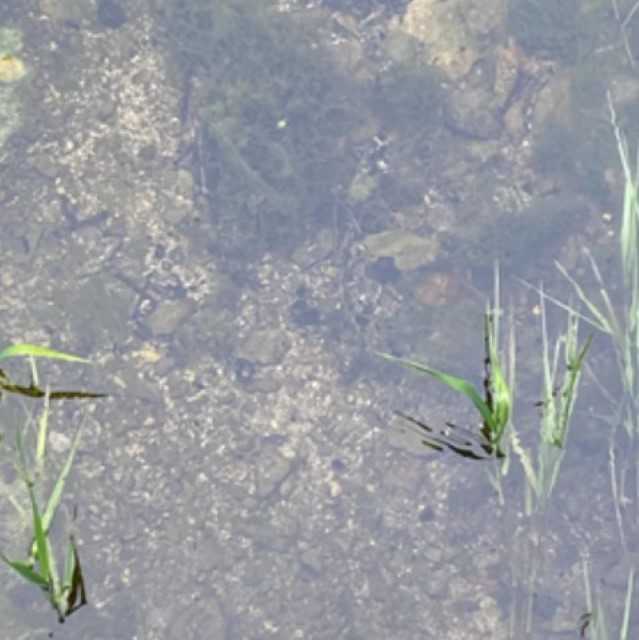
How to be a water-wise gardener
SEO Space
I am always astonished by how clear the young Thames is - you can almost spot the tadpoles on the stream bed. A little further up, a bend in the stream forms a natural pool where the water is the colour of aquamarines.
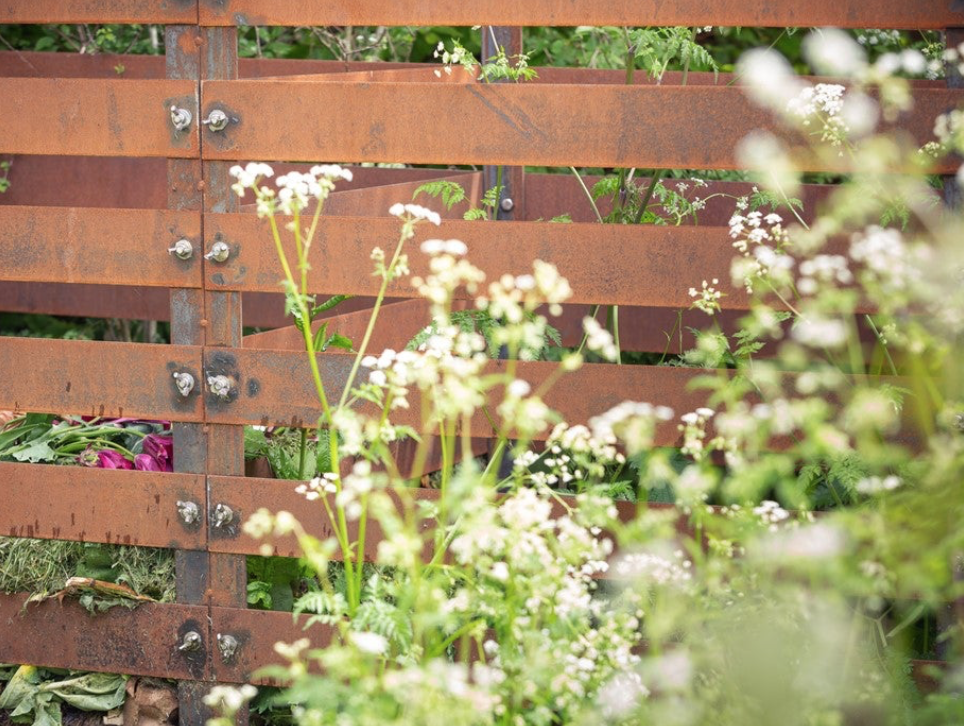
Our 3 bin composter takes shredded gardening waste and over time generates organic matter, which, when introduced to the soil, improves its condition and ability to retain water.
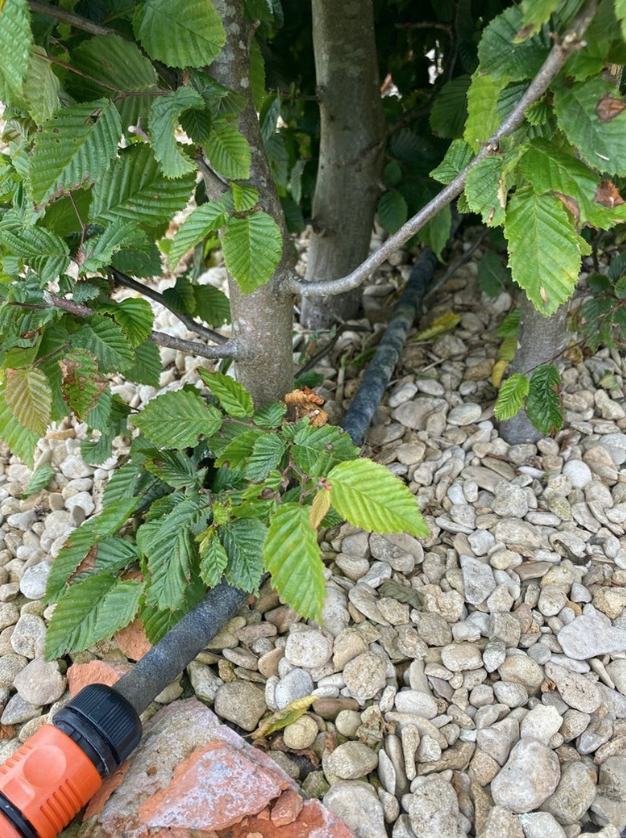
Seeping hose runs under a hornbeam hedge and is plugged into the main supply when a good soak is needed – this one is mulched with gravel to retain moisture.
When I first thought of writing about ways to conserve water, we were in the halcyon days of early summer when rules were being relaxed a little, the sun seemed always to be in the sky and the nation’s beaches were crowded. Now it seems as if the clouds cannot empty themselves of rain and the Cotswolds have been the subject of their own weather warning!
I have two reasons to be particularly conscious of water usage. We live no more than 100 metres from the Thames as it flows from Kemble on its long journey to London and the sea. My neighbour kindly permits us to walk across his land when he is not there and stand on his bridge to gauge the river’s height and its mood. By now, shortly after midsummer’s day, the stream bed is normally dry and I worry about where the little fish I see in spring have found water. This week I looked down into sluggishly flowing water and could see tadpoles on the stones on the bed of the stream - it is thought that some tadpoles may delay their metamorphosis into frogs but I have never before seen them in July. The very fact that there is water in the river suggests that rainfall has been high.

Our courtyard garden consists of yews in planters, paving slabs, brick edging and gravel.
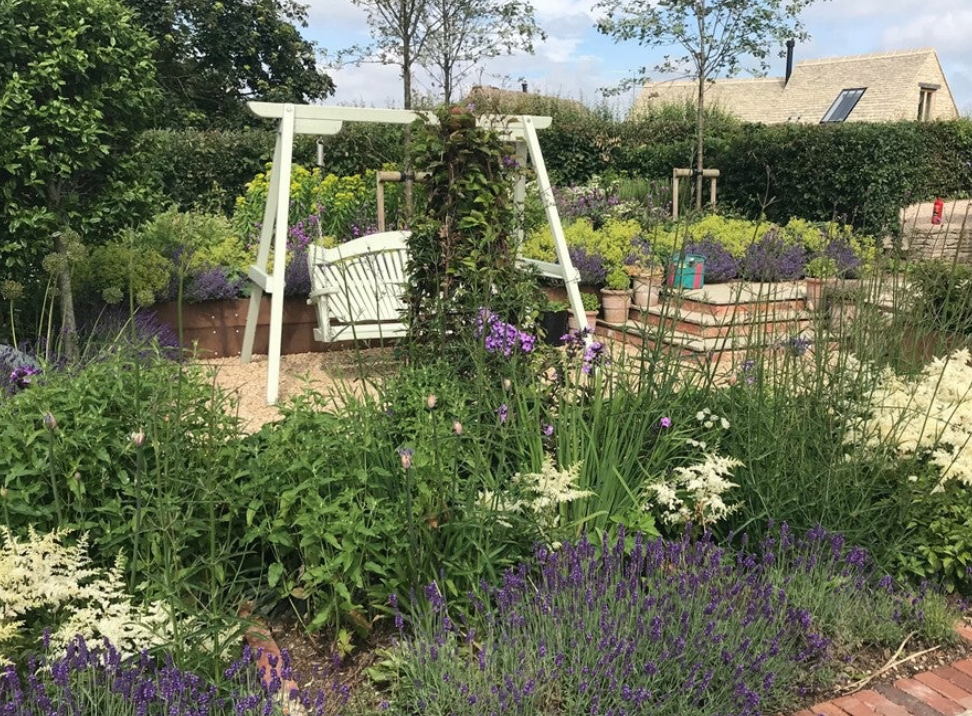
It is a sociable and interesting space, containing plenty of plants to keep wildlife happy but without relying on lawn, which requires watering in the height of a dry summer.
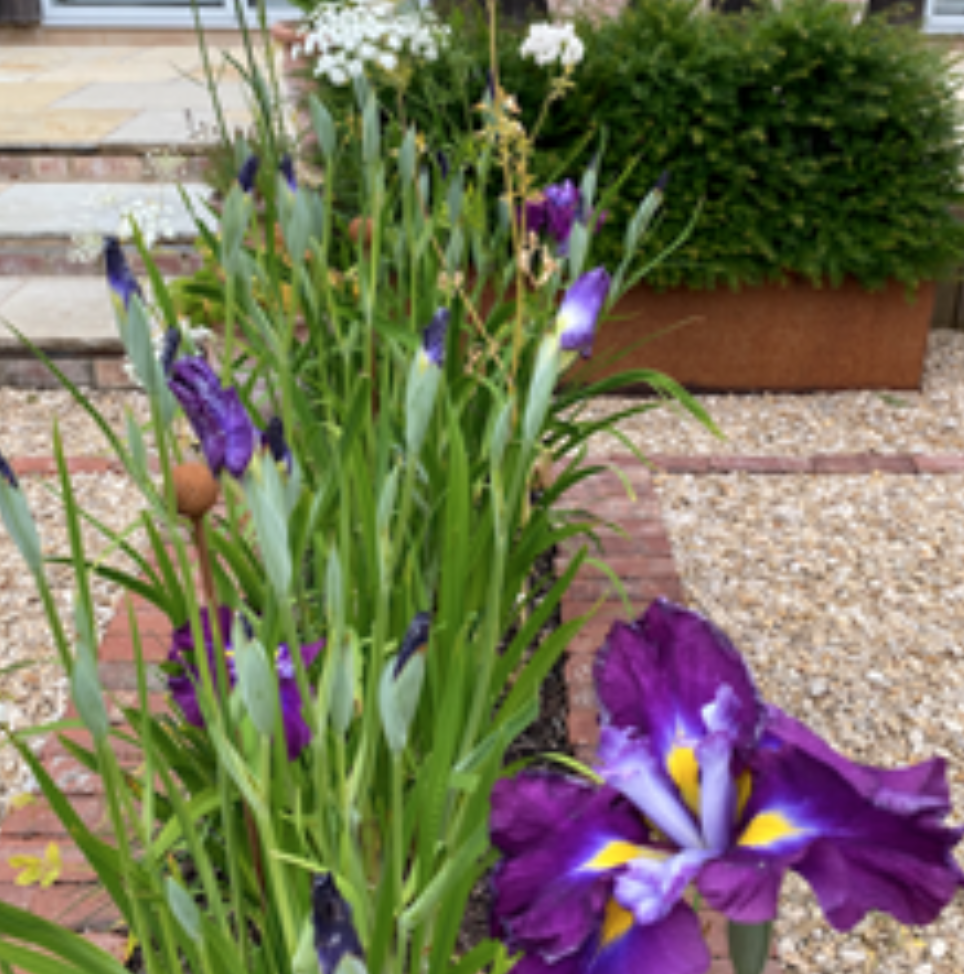
Right plant, right place: success and failure!
Success: the iris ensata ‘Purple Parasol’ thrives in the damp, often waterlogged courtyard (which we discovered, as we did the groundworks, is very close to the water level of the Thames and is frequently submerged)!
The other reason that I am water-conscious is that we depend entirely on a borehole for our water supply. The former farm, on which our home stands, has a borehole that supplies four of the houses in our enclave, which makes me especially conscious that the supply of water is finite and that ours could dry up one day.
I try to bring that consciousness into my garden and obey the cardinal rules of water conservation:
Organic matter: our soil is heavy clay but I have gardened, in Surrey, on green sand and introducing organic matter is essential to improving whatever soil you have. We generate lots of gardening waste and we have a 3 bin steel composter that we put shredded material into, moving it from the first to the second and then the third compartment as it fills, to turn and aerate it. Most councils have a green bin system that will take garden waste for compost and sell it back at local civic amenities – a virtuous cycle.
Watering: the larger they are, the more water plants need in their first few years. We have planted large numbers of trees and hedges and have put in seeping hose under all of the lines of hedges and along new borders as they are planted. We can then move the main water hose to an area, plug it in and give the plants there a really good soaking over 24 hours – much more effective than ‘little and often’. I tend not to water the borders apart from giving young plants regular soakings as they establish themselves. I have lots of large terracotta pots, all full of flowers and needing lots of water; I use the hose to soak them until the water begins to run out of the bottom of the pots and the air pockets have stopped bubbling.
Rainwater: collecting rainwater is good for plants and good for the environment. Putting rainwater barrels under downpipes from roofs is the most effective, but any way of collecting and using rainwater is a benefit to the garden.
Reduce your lawn area: I will confess immediately that I am not a fan of artificial grass but I do understand that it is easy to install and maintain. However, there are plenty of other solutions for the areas that are not planted. Any porous material: gravel; a mixture of paving, stones, bricks and gravel; hoggin or resin bound systems can all provide both an attractive feature and be environmentally friendly.
Plan your planting: I cannot say that I have practised planning my planting to put plants that require similar conditions together – but perhaps we do that unconsciously when we chose plants that suit the soil we garden on. No amount of water, feed or care will make sarcococca thrive on my alkaline soil and it is the same for a plant’s water needs. In the 1960’s, the great plantswoman, Beth Chatto, took an overgrown waste of brambles, parched gravel and boggy ditches and transformed both it and gardening culture by using plants adapted by nature to thrive in different conditions: right plant, right place. She continues to be influential today.
Mulch: last but by no means least – mulch, mulch, mulch! In autumn, as part of the great tidy up (by which I do not mean cutting everything back, I always leave some stems and seedheads for birds and over-wintering insects), I apply a layer of mulch, 3-5 cm deep over the borders (remembering not to cover the crowns of peonies or hellebores). Any well-rotted material - manure, compost, fine bark – will suppress weeds, keep in moisture and, over the years, improve the texture of your soil.
Those of us who love our gardens have a duty to think about ways to conserve water – there are ways to do it even in the smallest garden and I hope I have given you a few to think about.
Follow us on Pinterest for more advice and inspiration for your English country garden: www.pinterest.co.uk/plantsupports
Follow us on Instagram: www.instagram.com/muntons_plant_supports
Follow us on Facebook: https://www.facebook.com/muntonstraditionalplantsupports
